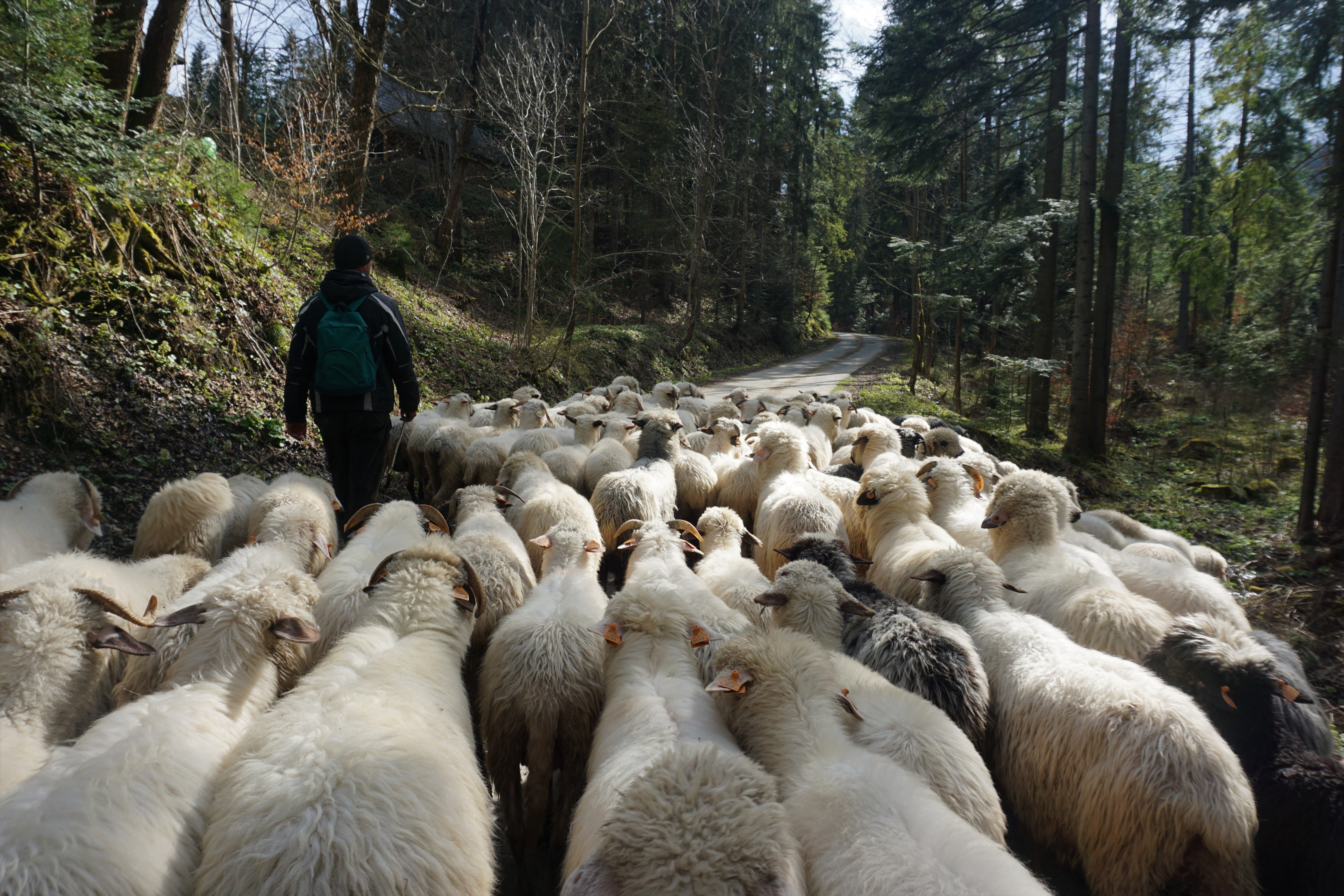Czas spędzony razem, oderwany od codziennej pracy, zadań czy celów, pozwolił mi zatrzymać się i zastanowić, co oznacza dla mnie przywództwo służebne (ang. Servant Leadership)

ang. below
W tym roku razem z zespołem liderów A4BEE udaliśmy się na wypasanie owiec. Podobnie jak każdy uczestnik tego doświadczenia zastanawiałem się, co może mieć wspólnego firma z branży IT/OT lub biotechnologiczna z pasterstwem?
Wielu z nas zastanawiało się również, co znajduje się głębiej niż chodzenie po pastwiskach i wstawanie codziennie około 5 rano... biorąc pod uwagę, że nie każdy jest "rannym ptaszkiem".
Czas spędzony razem, oderwany od codziennej pracy, zadań czy celów, pozwolił mi zatrzymać
się i zastanowić, co oznacza dla mnie przywództwo służebne.
Świadome przywództwo z troską o innych i wdrażanie tej pomocy z pokorą, stawianie potrzeb innych ponad swoje własne — między innymi takie podstawowe spostrzeżenia poczyniłem na temat pasterzy, którzy są z owcami na co dzień. Niezależnie od pogody, nastroju czy samopoczucia — jako opiekunowie
owiec zawsze są z nimi. Ta obecność jest kluczowa; stwarza możliwość, aby zarówno lider, jak i
zespół obserwowali się wzajemnie i wiedzieli, kiedy być na czele stada, a kiedy z boku lub z
tyłu, i jaki to ma wpływ.
Kolejna obserwacja z pastwiska to obecność i rola psów pasterskich. Wspaniałych zwierząt, spełniających się w służbie owcom i liderowi, pomagających w identyfikowaniu i sygnalizowaniu zagrożeń.
Czy w naszych zespołach mamy zaufanych ludzi, którzy pomagają liderom nie zawsze być tu i
teraz ze stadem, dając jednocześnie poczucie bezpieczeństwa i pewności, że zespół, projekt,
działania zmierzają do celu zgodnie z wyznaczonym kierunkiem i założeniami? To doskonałe
pytanie. Ważne jest, aby takie osoby zidentyfikować. Bez nich rola przywódcy służebnego jest
możliwa, ale znacznie bardziej wymagająca i wyczerpująca.
Przekładając doświadczenie pasterstwa na przywództwo służebne, warto zawsze pamiętać o
jego trzech głównych krokach:
1. Rozpoznaj potrzeby
2. Stwórz warunki
3. Usuń przeszkody
Warto również skupić się na tym, jak budować umiejętności i potencjał najbardziej
potrzebujących członków zespołu.
Powyższe spostrzeżenia i rozważania nie byłyby możliwe bez wspaniałego zespołu biorącego
udział we wspólnym doświadczeniu pasterstwa, a także organizatorów.
Autor: Krzysztof Kaczor CEO A4BEE, Delivering- Meaningful- Innovation
This year, together with the A4BEE leadership team, we went for joint sheep grazing. What
does the IT/OT or biotech-focused company have to do with sheep herding? Many of us
wondered what is deeper than walking in the pastures and getting up every day around 5 am…
considering that not everyone is a ‘morning bird’.
Time spent together, detached from everyday work, tasks, or goals, allowed me to stop and
think about what servant leadership means to me. Conscious leadership with care for others
and implementing this help with humility, putting the needs of others above your own – among
other things, I made these basic observations about shepherds who are with sheep every day.
Regardless of the weather, mood, or well-being – as a keeper of the sheep, he is always with
them.
This presence is critical; it creates an opportunity for both the leader and the team to
observe each other and know when to be at the front of the herd and when to be on the side or
behind, and what impact that has.
Another observation from the pasture is the presence and role of shepherd dogs – wonderful animals fulfilling themselves in serving the sheep and the leader, bringing help by identifying and signaling threats. Do we have trusted people in our teams who help the leaders not always be here and now with the herd, while giving a sense of security & safety that the team, project, and activities are moving towards the goal according to the set direction and assumptions? Excellent question. It is important to identify such people.
Without them, a servant leader's role is possible, but much more demanding and exhausting.
In condensing my sheep herding takeaway into servant leadership, it's always worth
remembering its three main steps:
1. Recognize the needs,
2. Create the conditions,
3. Remove the obstacles.
It is also worth remembering to focus on how to build the weakest up to their capabilities and
potential.
The above observations and considerations would not have been possible without the wonderful
team taking part in the common sheep herding experience. And also the organizers.
Krzysztof Kaczor CEO A4BEE, Delivering- Meaningful- Innovation